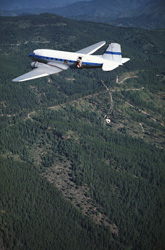Establishing advanced specifications for parafoils
The concept of using parafoils for different applications than the ones initially developed unveils the importance of utilizing the existing know-how to meet societal needs. The prospect of transferring heavy loads was investigated indicating the need for advanced specifications that had to comply with particular requirements and quality standards. To this end, FASTWING partners focused on the actuation system of parafoils aiming to improve the new structures by decreasing their weight. Specifically, the network partners were successful in redesigning the gearbox and winch to comply with the weight minimization process of the actuator system. A worm gearbox solution replaced the planetary one resulting in a cost-effective and lighter combination for the same torque capacity with high static irreversibility. However, the improved fabrication in terms of control was diagnosed with some imperfections that require further optimization to get corrected. In particular, the efficiency of worm gearbox varied during the starting up and stopping process following a non-linear profile with severe impact on the desired performance. Other features that were subjected to optimization comprise the controller parameters. These were incorporated in the programming algorithm of a position control loop using proportional, differential and integral terms. Refinement followed and once convergence was reached positional coordinates of sufficient accuracy were provided. Evaluation of the actuator's performance followed on ground tests. This effort aimed to assess the new parafoil success rate, an essential stage towards ensuring compliance with quality standards for the new construction. Results showed that the control parameters introduced attained the goals set and the actuator system had the potential to work effectively even without human intervention. The impact of this evaluation is vast considering that successful missions could be designed without risking the glider's life.







